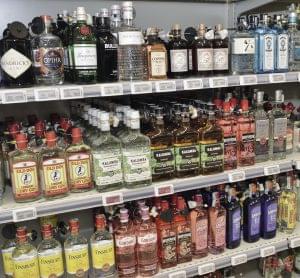The excitement of discovery

Sára Palcsó
marketing director
Zwack Unicum
Gin’s share in the Hungarian spirits market is 2.26 percent at 488,000 litres, while in the market of quality spirits gin has a 2.2-percent share with 210,000-litre sales – we learned from Sára Palcsó, Zwack’s marketing director. Zwack’s Kalumba Madagascar brand (Nielsen – 2020.04-2021.03) is the market leader in the premium category. The company is the distributor of premium category Gordon’s London Dry and Pink gins, and of superpremium brand Tanqueray.
According to Csaba Mosonyi, marketing director of Pernod Ricard, besides traditional London Dry gins, the main direction in Hungary is gins with special flavours and spices. He forecasts that gin consumption will still be growing 5 years from now, but at a slower rate. In the premium gin category Beefeater is the market leader (IWSR – 2019),, while Malfy is a major brand in the superpremium segment; in the ultrapremium category Monkey 47 and Ki No Bi are well-known and respected brands.

Attila Piri
marketing director
Heinemann
Attila Piri, marketing director of Heinemann explained that the popularity of gin is growing so fast that even lower category bars are serving premium and superpremium gins now.
Heinemann’s standard category gin Finsbury is market leader in import volume. Last year they unveiled Japanese gin Roku and 2021 will bring new Ophir flavours, plus Scapegrace’s innovative Black variant is already available.

Anna Lénárt-Losonczi
category brand manager
Roust Hungary
Anna Lénárt-Losonczi, Roust Hungary Kft.’s category brand manager told our magazine that gin still only has a 1-percent share in the Hungarian spirit market, but it is the fastest-growing category. In the last 2-3 years the company added new gins to the product portfolio, such as superpremium The Botanist and Hendrick’s. This year’s novelty is fruit-flavoured Spanish gin Verano.

Experts say that gin is a unisex drink

Viktor Molnár
Bacardí-Martini portfolio
brand manager
Dunapro
Viktor Molnár, group brand manager of Dunapro’s Bacardí-Martini portfolio is of the opinion that gin consumption is increasing dynamically, but the big breakthrough hasn’t happened yet. The premium segment and the level above that are characterised by a strong oversupply. The company markets one of the most special gins in the market, Bombay Sapphire – it has been in the premium gin Top 3 for many years.

Péter Bárány
managing director-owner
Brebis
Péter Bárány, owner and managing director of Brebis told our magazine that it is worth differentiating between standard and premium gins, because their buyers are very different. The company makes 5 different premium category craft gins
Anna Lénárt-Losonczi explained that enriching gin with new flavours makes it possible to create simple but characteristic cocktails and long drinks.
Viktor Molnár said: major gin brands are coming out with new innovations basically every year.
Attila Piri told that completely new drink characters can be created by adding various spices and medicinal herbs to gin during the distillation process.
Sára Palcsó reckons that the market is open to new innovations – this was very well indicated by the success of Kalumba Spiced, this exotically spicy, modern gin aged on a dried fig bed in an oak barrel. Kalumba White is flavoured with lemon grass and cubeb pepper.
Csaba Mosonyi believes that flavoured gins will have a market share similar to vodka’s. In his view fruit flavours and classic spicy gin variants will dominate. Péter Bárány thinks that a few years from now more than 10 percent of Hungary’s gin consumption can be Hungarian-made. //

Having a look at new products, the color of the labels of kraft gins apparently tend to be grey
Tonic and RTD in the gin category
Sára Palcsó: A good gin and tonic can only be made with quality tonic, which can contribute to the category’s growth.
Anna Lénárt-Losonczi: Shoppers are increasingly conscious and they are willing to pay more for top tonics.
Péter Bárány: This spring we teamed up with Mayer syrup for creating a tonic syrup that can serves as an alternative to bottled premium tonics.
Viktor Molnár: Just like many new Hungarian gins appeared in the market, new Hungarian tonics will turn up – there are already a few promising brands.
Attila Piri: The RTD market is small, but it has been growing in the last few years. On the international stage the RTD gin market is expanding.
Csaba Mosonyi: My view is that RTD gin tonic isn’t even big in Western Europe yet. It is very difficult to make high quality RTDs.//



Related news
St. Hubertus’ new campaign conveys the magic of nature
St. Hubertus is drawing attention to the power of the…
Read more >Related news
Most major grocery chains will keep their stores open until noon on December 24th
Most of the large grocery chains will keep their stores…
Read more >Viktor Orbán: Economic recovery and historic opportunities for 2025
On Friday morning, Prime Minister Viktor Orbán presented the Hungarian…
Read more >Recognition of Consumer Protection Excellence: Honoring the Best of 2024
This year’s outstanding consumer protection officers and special award recipients…
Read more >








